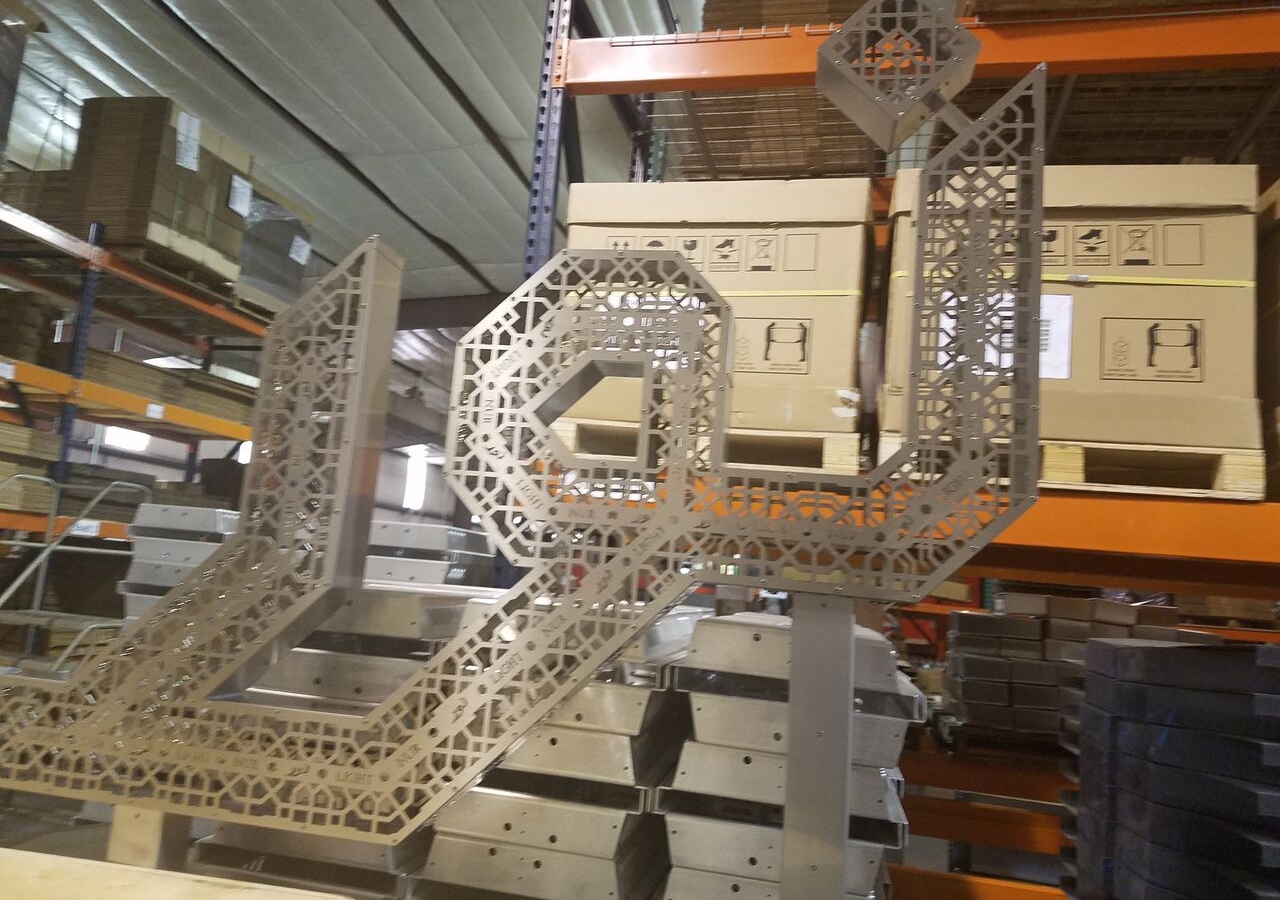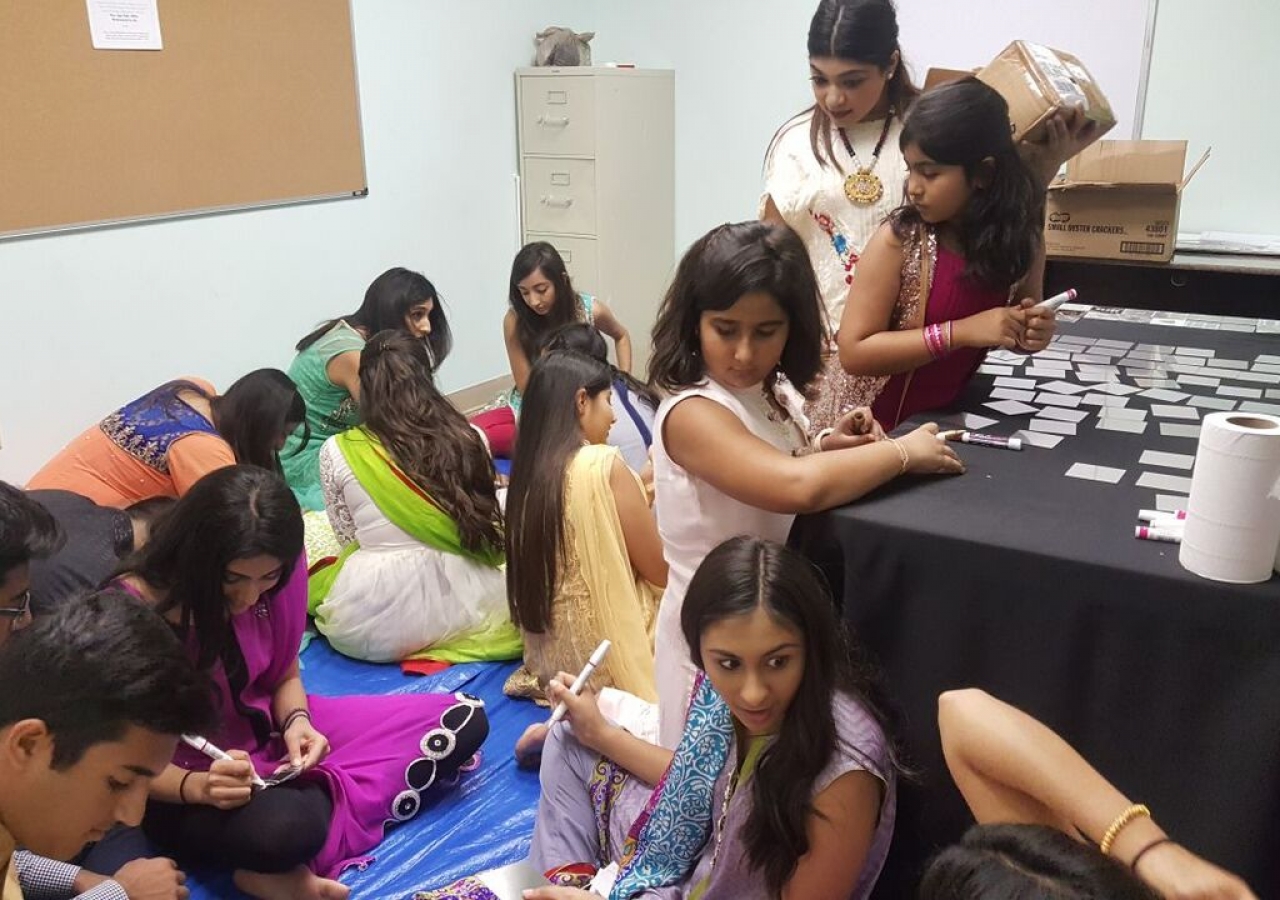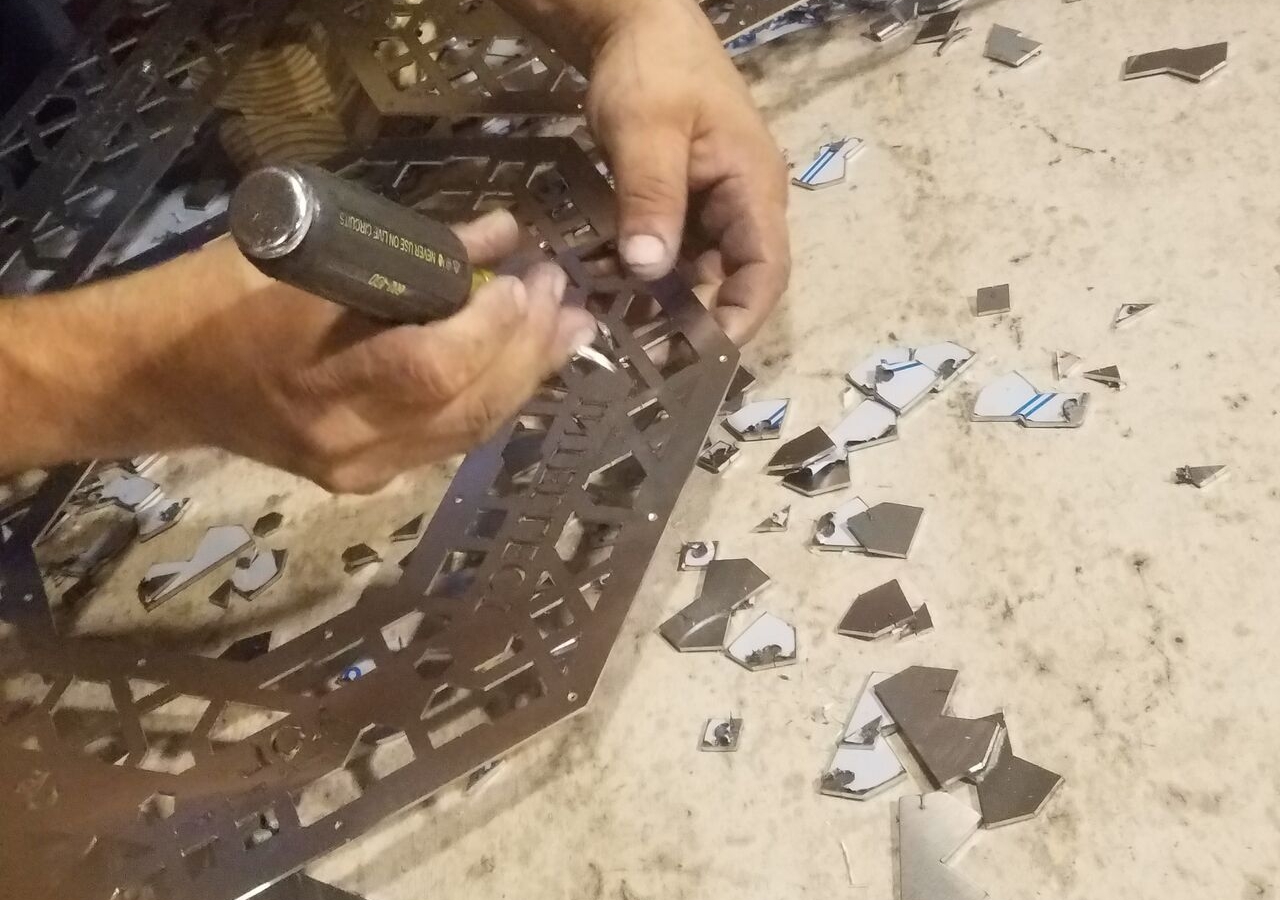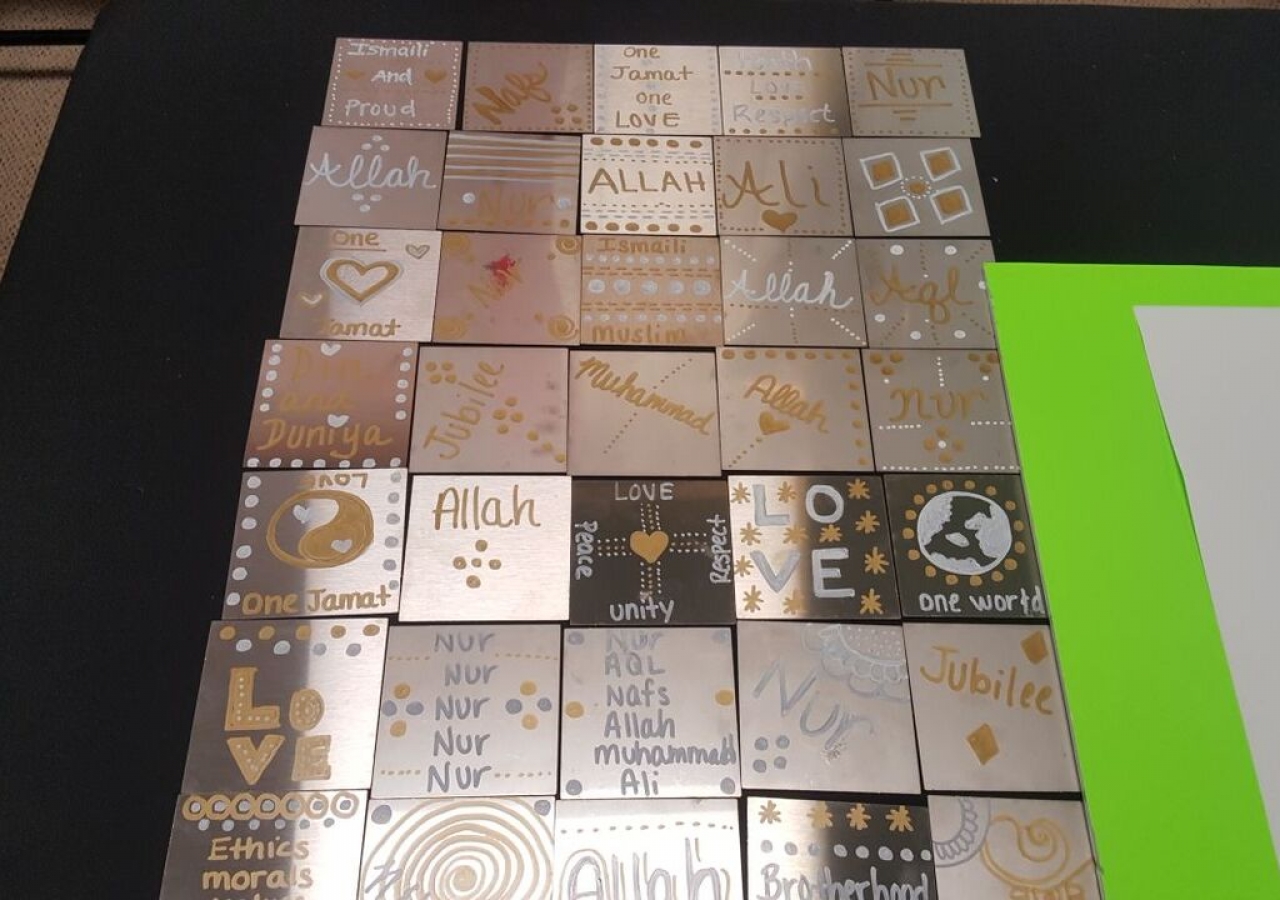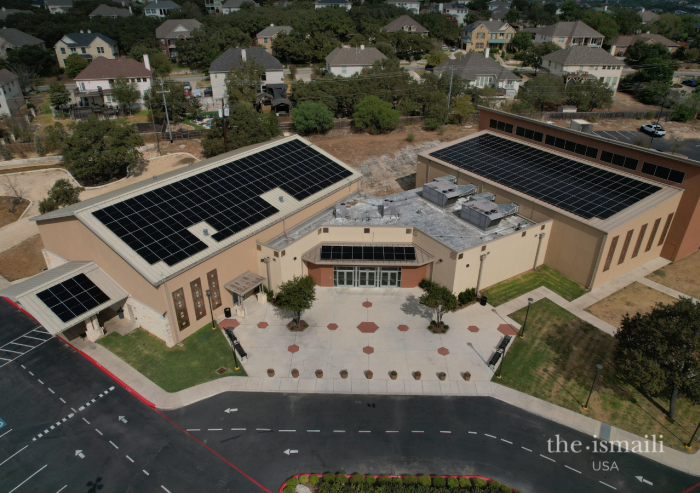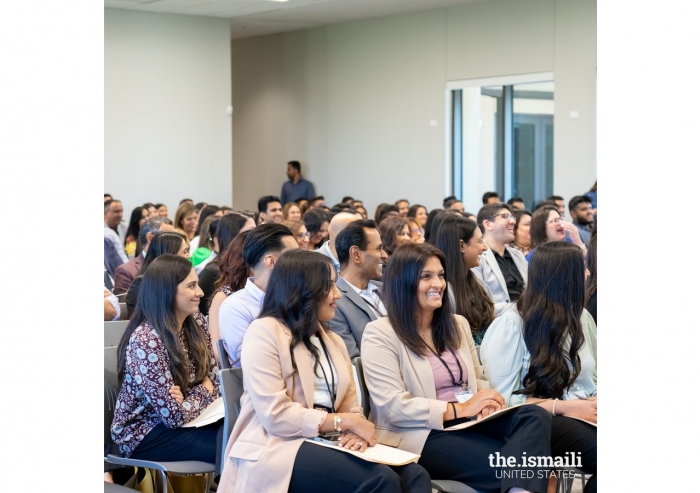“The Mosaic provides an opportunity for the Jamat to think about the Imamat and the Diamond Jubilee on their own terms, yet as one Jamat.” -Numa Dhamani, sculptor and designer of the metal sculptures.
When the Opening Ceremony planning team for July 11, 2017, started considering ideas for implementation, the desire to have Jamati members participate and contribute to something visual at the Opening Ceremony venues kept resurfacing. The team’s vision around a 3D structure that could be placed in Opening Ceremony venues started taking form.
A youth from Sugar Land Jamatkhana, Numa Dhamani, a recent college graduate and a talented artist, created the vision around words that would be meaningful to the Ismaili Muslim tariqah, in the form of sculptures.
With the assistance of a team of collaborators, six sculptures depicting Arabic words were confirmed: Nur (light), Aql (intellect), Nafs (soul;self), Allah, Muhammad, and Ali. Each would be metallic and created with intricate details of various geometric interlaced patterns. The art spoke to the group profoundly, and they were drawn to the beauty of the project, which represented spiritual and intellectual connections.
But there needed to be a way to engage the Jamat with this concept. So the plan devised was to encourage the Jamat, individually, to reflect and contribute a metal tile towards the base of each sculpture, to built through a compilation their creativity. Jubilee Mosaic was the name selected for this project.
To understand how to fabricate the metal pieces and the sculptures themselves, and to work through other technicalities and engineering needs, needed the assistance of Pyarali Umatiya of Houston, who owns a metal fabrication company. "I enjoy working with the young Jamati members," he said, and, "Sometimes I don't know them when I am asked to help, but with our Imam's grace, our Jamat has progressed and we are blessed with a Jubilee. May Mawla keep us all united! One Jamat forever!"
The next catalyst was an architect in California, Neha Sadruddin, who created technical specifications for the metal sculptures, and assisted with making the project scaleable. A Houston engineer, Noamanali Momin, created a 3D design and completed the final details.
“This project highlights the role of the Imam and places emphasis on our pluralistic and diverse Ismaili community. I was trying to show that din and duniya are interconnected and inseparable, which is represented in the 60 years of the Imam’s work for the Jamat,” said Numa Dhamani, the young designer who conceptualized the initial design for the sculptures.
It took the efforts of a team of creative and pragmatic individuals to take the sculptures from ideation to production. The main team involved in this project includes Noamanali Momin, Numa Dhamani, Kashif Hirani, Siraj Momin Khawaja, Neha Sadruddin, Arif Momin, Sarjana Momin, and Pyarali Umatiya, and members of the Southwest Imara Team (who made wooden bases on which the metal tiles would be affixed). Ultimately, the metal word-based top portions of the sculptures and their wooden bases were produced in Houston and shipped for display in the nine celebration halls around the country on July 11, 2017. Many of the individual tiles created by the Jamat were used in the bases.
"Once we had the design and concept ready, we worked very closely with all the regional leads to help us implement the design of the mosaic metal plates by the Jamat,” said Kashif Hirani the National Team Project Lead for the Jubilee Mosaic project. “Essentially, we were successful in engaging members from most Jamatkhanas in the US to design these metal plates, which are now coming together to form the mosaic piece."
Over 800 metal pieces were used for each sculpture, and approximately 20,000 metal pieces were designed by the Jamat. This was all done by hand in over 60 Jamatkhanas, during the recent Eid-ul-Fitr celebration. “Each region in the United States will receive one or more sculptures for display,” said Arif Momin. A total of 23 metal sculptures were created.
“The creative process of exploring various patterns and calligraphic styles was a unique experience for the team,” said Neha Sadruddin. “The design, inspired by Islamic geometric patterns, constructed a mosaic within itself that came together to form each of the Arabic words. The mosaic serves as an important symbol of unity and diversity of the global Ismaili Jamat.”

